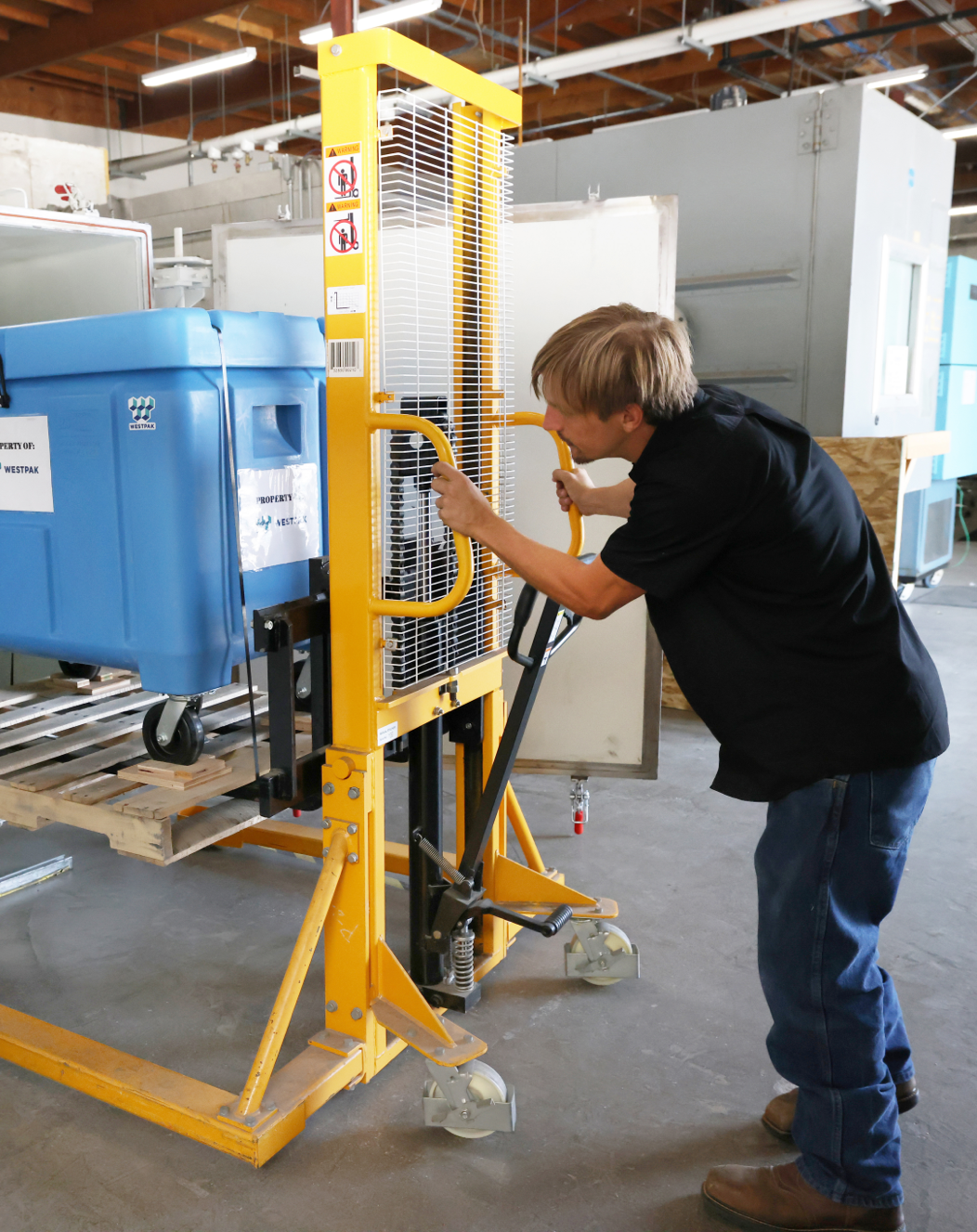Altitude Testing
Altitude testing simulates reduced air pressure that a product or packaging system may encounter during distribution, storage, or in-use environments.
Altitude testing simulates environments with different levels of reduced air pressure, allowing manufacturers to gauge the impact that high or low altitudes may have on their product or package system. The altitude testing services available at Westpak provide valuable insight into how products and package systems perform when subjected to these stressful conditions. Altitude testing is especially valuable for companies in the commercial transportation industry, where a variety of products and materials are exposed to extreme altitudes through air and ground transportation.

Why is altitude testing important?
Altitude testing (also known as low air pressure) simulates the reduced air pressure experienced at higher elevations to evaluate the impact on the performance of the product or the package system. Sealed flexible package systems have the potential to fail when exposed to altitude stress. In fact, altitude exposure by truck transport often exceeds the levels experienced in commercial air transportation.
Since products or package systems can fail under the stress of extreme altitudes, it’s important to understand how to survive these conditions. Damaged products can have a negative impact on company profits as well as the reputation. Altitude testing can help manufacturers and designers determine whether a product can safely travel through extreme altitudes.
Frequently Asked Questions
Get answers to our most frequently asked questions.
Who should perform altitude testing?
Every company should consider the effects of altitude on both the product and the packaging. Altitude tests are used to evaluate both operational performance of a product as well as transportation and storage. Some products may be designed with a pressure sensor that would need to compensate for ambient air pressure at various altitudes. Denver Colorado or Mexico City that are two locations that are well above sea level and may be a challenge for capital equipment to operate normally.
From a packaging standpoint, flexible materials are often sealed at sea level. As the altitude is increased the ambient air pressure is reduced and the internal air pressure of the package increases causing the package to inflate. We might call this the “Potato Chip Bag” effect. If multiple packages are placed inside a carton and then a shipper, the potential for damage to the packaging materials may occur.
Foam cushion materials can also be affected by low air pressure. Closed cell materials may burst and provide less protection for the product. This could lead to reduced cushion performance and damage to the product.
Some parts and subsystems need to be able to perform reliably in the case of rapid decompression. Of course, aviation parts come to mind, but any part or subsystem can be affected by reduced pressure. A few examples can include safety equipment, seals, technical instrumentation, controls, ejection systems, optical gear.
What factors does an altitude test look at?
Our altitude testing services look at several different factors to generate comprehensive and accurate results. In addition to exposing the product or package system to varying levels of reduced air pressure, our altitude tests can also simulate the changes in temperature that a shipment may face at extreme altitudes. By taking more than one factor into account during altitude tests, we can more accurately replicate the environment to which a product or package system will be subjected. The results that these altitude tests produce can be extremely useful for manufacturers and designers to prevent damage to products and optimize the shipping process.
What level should most altitude tests be performed?
Pressure differentials can cause potentially harmful stress on any enclosed volume of air whether and can influence the product or the package system. The reduced pressure a product or package system experiences while in transport depends on how it will be transported. Our altitude testing services simulate different altitude levels depending on the mode of transportation you intend to use for your product. Typical altitude levels are 4,267m (14,000 feet) and are allowed to dwell for one hour. However, military standards and some European standards may require 12,192m (40,000 ft.)
What are the capabilities for altitude testing at Westpak?
Westpak offers a variety of altitude testing services. Altitude tests are conducted at our labs using high-quality equipment performed by a team of qualified engineers. The typical procedures/protocols we are able to conduct include, but are not limited to the following.
- ASTM D6653
- IEC 60068-2-13
Westpak continually upgrades and expands its equipment offerings and includes the following.
(3) – Altitude Chambers
(2) – Temperature/Altitude Chambers
(1) – Temperature/Vibration/Altitude Chamber
Whether you need to perform a product level test or are looking exclusively at the packaging, contact Westpak to inquire about our altitude testing services. Our team and facilities can provide you with valuable insight that can help you optimize your product or package system.
Accreditations:

Testing at Westpak has been accredited by A2LA to comply with ISO 17025.

Westpak testing labs are ISTA certified to perform a variety of tests.
